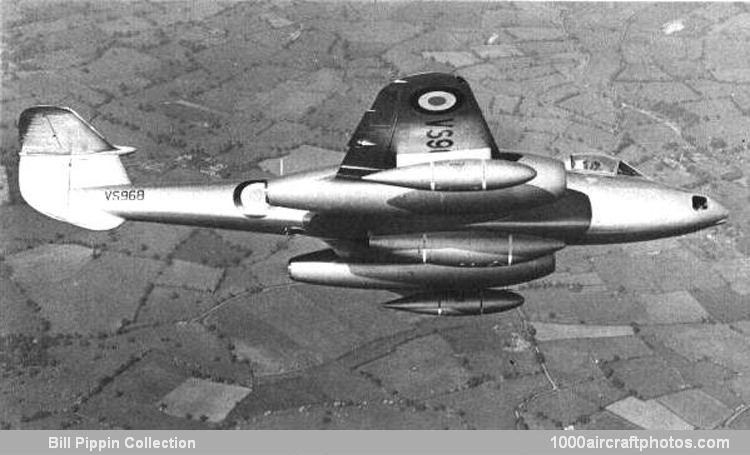10/31/2017. Remarks by Johan Visschedijk: "Designed and developed in parallel with the Meteor FR.Mk.9, the Meteor PR.Mk.10 was intended as an unarmed, high-altitude photo-reconnaissance aircraft. It utilized the single-seat FR.Mk.9 camera-equipped front fuselage, less armament, and the long-span wings and tail unit of the early Meteor F.Mk.4s. The PR.Mk.10 had a service ceiling of 47,000 ft (14,326 m) and a maximum endurance of 3 hr 40 min.
In addition to the camera installation in the nose, there was a ventral camera installation in the rear fuselage consisting of two type F.52 cameras on type 39 mountings, all remotely-operated by the pilot through a type 35 No. 8 controller in the position normally occupied by the gyro gunsight. Camera heating was by means of hot air piped from the starboard engine compressor casing to the nose installation and from the port engine to the ventral cameras, heat being confined to the camera-bay in the rear fuselage by a canvas curtain. To protect the camera windows from mud or stones thrown up during taxiing or take off, jettisonable metal covers were fitted.
The pictured prototype was first flown by Chief Experimental Test Pilot Jan 'Zura' Zurakowski on March 29, 1950, and in August was delivered to RAE Boscombe Down for brief handling trials with wing and ventral tanks.
Fifty-nine Meteor PR.Mk.10s were built, and the first delivery was on February 2, 1951, when VS968 arrived at RAF GŁtersloh, Germany, for No. 541 Squadron."
